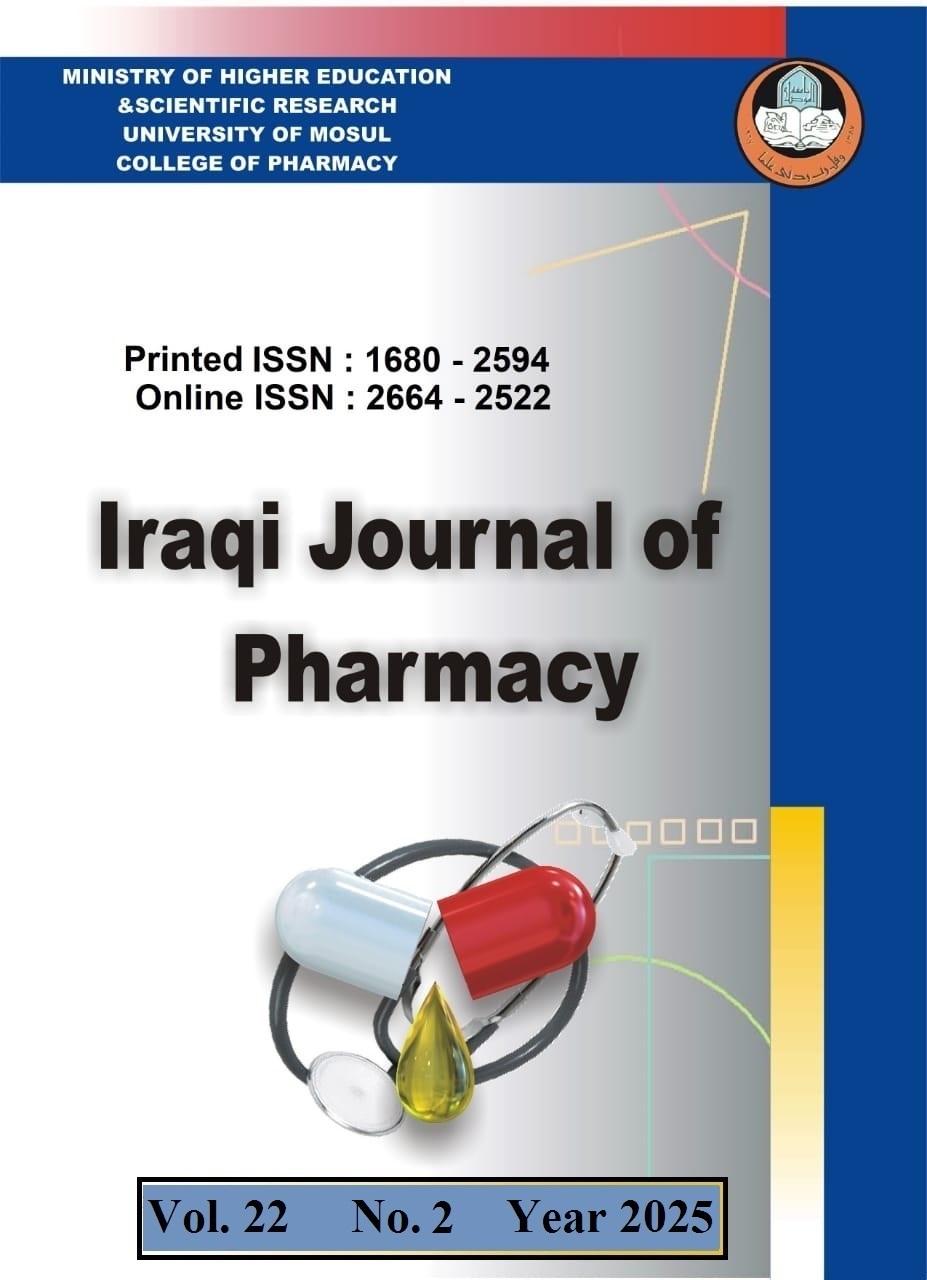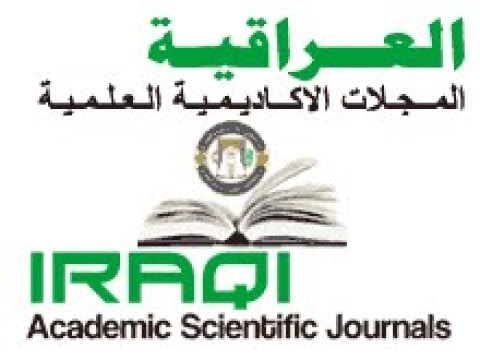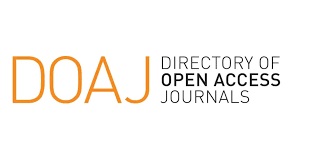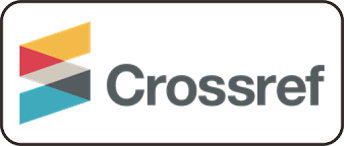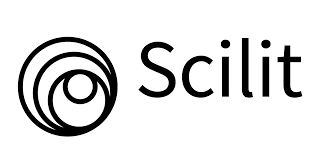1,4-Dioxane: A Narrative Review of Its Pharmacological and Toxicological Attributes
Abstract
Background: 1,4-dioxane (DX) was first discovered in 1863 and has been made accessible for commercial purposes around the 1930s as a solvent for cellulose and in the production of plastics. Aim: The purpose of this review was to highlight the chemistry of DX as well as its various reported pharmacological and toxicological attributes. Methods: The reviewed data was abstracted by using some scientific platforms, such as Google Scholar, Scopus, and Web of Science, with no limitation to the publishing date. Results: Chemically, DX is an organic heterocyclic molecule that can be described as an ether and found as a colorless liquid with a slightly sweet smell, akin to diethyl ether. Also, this old molecule is usually referred to as dioxane because its other structural isomers (1,2- and 1,3-) are seldom encountered. Given its pharmacokinetic profile, DX is quickly and entirely absorbed after oral intake and inhalation exposure, with the cutaneous route accounting for substantially less absorption. The main product of the metabolism of DX in humans and rats is -hydroxy ethoxy acetic acid, which is a urine-eliminated metabolite. Pharmacologically, it has been found that DX and its derivatives have therapeutic benefits against cancer in general and hematologic malignancies in particular. Also, the studied molecule can function as an antimicrobial prospect against various pathogenic microbes. Depending on the dose and time frame, DX can cause two types of toxicity, including acute and chronic, with various attributes for each. Conclusion: Based on the examined information, it is possible to employ DX as a bioactive scaffold for developing potent antitumor and antimicrobial agents that can serve better in therapeutics.
References
- Abdo NYM, Mohareb RM. Antiproliferative and Antiprostate Cancer Activities of Heterocyclic Compounds Derived from Cyclohexane-1,4-dione. Acta Chimica Slovenica 2022;69(3):70013.
- Abdulaziz NT, Mustafa YF. Antibacterial and Antitumor Potentials of Some Novel Coumarins. International Journal of Drug Delivery Technology 2022;12(1):23947.
- Abdulaziz NT, Mustafa YF. Anticancer properties of hymecromone-derived compounds: A review. International Journal of Pharmaceutical Research 2021;13(1):216374.
- Adamson DT, Wilson JT, Freedman DL, Ramos-Garca AA, Lebrn C, Danko A. Establishing the prevalence and relative rates of 1,4-dioxane biodegradation in groundwater to improve remedy evaluations. Journal of Hazardous Materials 2022;424:127736.
- Al-Shakarchi W, Saber Y, Merkhan MM, Mustafa YF. Sub Chronic Toxicity Study of Coumacines. Pharmacognosy Journal 2023;15(1):1604.
- Andreozzi G, Ambrosio MR, Magli E, Maneli G, Severino B, Corvino A, et al. Design, Synthesis and Biological Evaluation of Novel N-Arylpiperazines Containing a 4,5-Dihydrothiazole Ring. Pharmaceuticals 2023;16(10):1483.
- Balc FM, Uras-Aytemiz N. Isomeric forms of 1,4-dioxane in a microsolvation environment. Computational and Theoretical Chemistry 2024;1236:114587.
- Basavaiah U, Basavaiah BY. Synthesis and Study of Antibacterial Activity of 1,4-Benzodioxinylisoxazole and 1,4- Benzodioxinylpyrazole Derivatives. Der Pharma Chemica 2017;9(14):14856.
- Bashir MK, Mustafa YF, Oglah MK. Antitumor, antioxidant, and antibacterial activities of glycosyl-conjugated compounds: A review. Systematic Reviews in Pharmacy 2020;11(4):17587.
- Bonifazi A, Newman AH, Keck TM, Gervasoni S, Vistoli G, Del Bello F, et al. Scaffold Hybridization Strategy Leads to the Discovery of Dopamine D 3 Receptor-Selective or Multitarget Bitopic Ligands Potentially Useful for Central Nervous System Disorders. ACS Chemical Neuroscience 2021;12(19):363849.
- Buay J, Kossai M, Damon-Soubeyrant C, De Haze A, Saru JP, Trousson A, et al. Persistent organic pollutants promote aggressiveness in prostate cancer. Oncogene 2023;42(38):285467.
- Charkoftaki G, Golla JP, Santos-Neto A, Orlicky DJ, Garcia-Milian R, Chen Y, et al. Identification of Dose-Dependent DNA Damage and Repair Responses From Subchronic Exposure to 1,4-Dioxane in Mice Using a Systems Analysis Approach. Toxicological Sciences 2021;183(2):33851.
- Chen R, Liu C, Johnson NW, Zhang L, Mahendra S, Liu Y, et al. Removal of 1,4-dioxane by titanium silicalite-1: Separation mechanisms and bioregeneration of sorption sites. Chemical Engineering Journal 2019;371:193202.
- Climova A, Pivovarova E, Szczesio M, Gobis K, Ziembicka D, Korga-Plewko A, et al. Anticancer and antimicrobial activity of new copper (II) complexes. Journal of Inorganic Biochemistry 2023;240:112108.
- Del Bello F, Bonifazi A, Giorgioni G, Piergentili A, Sabbieti MG, Agas D, et al. Novel Potent Muscarinic Receptor Antagonists: Investigation on the Nature of Lipophilic Substituents in the 5- and/or 6-Positions of the 1,4-Dioxane Nucleus. Journal of Medicinal Chemistry 2020;63(11):576382.
- Del Bello F, Bonifazi A, Giorgioni G, Quaglia W, Amantini C, Morelli MB, et al. Chemical manipulations on the 1,4-dioxane ring of 5-HT1A receptor agonists lead to antagonists endowed with antitumor activity in prostate cancer cells. European Journal of Medicinal Chemistry 2019;168:46173.
- Doan Ulu , Kuruay A, Gmhan Y, zdemir N, Ate B, zdemir . Design, synthesis, characterization, and biological activities of novel Ag(I)-NHC complexes based on 1,3-dioxane ligand. Journal of Inorganic Biochemistry 2024;261:112719.
- Domiska M, Pastuch-Gawoek G, Domiski A, Kurcok P, Erfurt K. Synthesis and Preliminary Evaluation of the Cytotoxicity of Potential Metabolites of Quinoline Glycoconjugates. Molecules 2022;27(3):1040.
- Du S, Sung YS, Wey M, Wang Y, Alatrash N, Berthod A, et al. Roles of N-methyl-d-aspartate receptors and d-amino acids in cancer cell viability. Molecular Biology Reports 2020;47(9):674958.
- Firoozeh AZ, Bokov DO, Salahdin OD, Abdelbasset WK, Jawad MA, Kadhi MM, et al. Cytotoxicity evaluation of environmentally friendly synthesis Copper/Zinc bimetallic nanoparticles on MCF7 cancer cells. Rendiconti Lincei Scienze Fisiche e Naturali 2022;33:4417.
- Gen T, von Helden F, Eckert E, Knecht U, Drexler H, Walter D. Metabolism and toxicokinetics of 1,4-dioxane in humans after inhalational exposure at rest and under physical stress. Archives of Toxicology 2016;90(6):131524.
- Gupta R, Rahi Alhachami F, Khalid I, Majdi HS, Nisar N, Mohamed Hasan Y, et al. Recent Progress in Aptamer-Functionalized Metal-Organic Frameworks-Based Optical and Electrochemical Sensors for Detection of Mycotoxins. Critical Reviews in Analytical Chemistry 2024;54(6):170728.
- Hajirezaee S, Jalil AT, Shichiyakh RA, Altimari US, Ghafel ST, Mustafa YF. Protective effects of dietary Lavender (Lavandula officinalis) essential oil against Malathion-induced toxicity in rainbow trout (Oncorhynchus mykiss). Annals of Animal Science 2022;22(3):108796.
- Hayes DG, Williams M, Pechacek N, Hebert B, Stanton K. Precise measurement of 1,4dioxane concentration in cleaning products: A review of the current stateoftheart. Journal of Surfactants and Detergents 2022;25(6):72941.
- Jaishankar M, Tseten T, Anbalagan N, Mathew BB, Beeregowda KN. Toxicity, mechanism and health effects of some heavy metals. Interdisciplinary Toxicology 2014;7(2):6072.
- Jasim SF, Mustafa YF. A Review of Classical and Advanced Methodologies for Benzocoumarin Synthesis. Journal of Medicinal and Chemical Sciences 2022;5(5):67694.
- Jasim SF, Mustafa YF. Synthesis and Antidiabetic Assessment of New Coumarin-Disubstituted Benzene Conjugates: An In Silico-In Virto Study. Journal of Medicinal and Chemical Sciences 2022;5(6):88799.
- Jasim SF, Mustafa YF. Synthesis, ADME Study, and antimicrobial evaluation of novel naphthalene-based derivatives. Journal of Medicinal and Chemical Sciences 2022;5(5):793807.
- Jayachandran P, Battaglin F, Strelez C, Lenz A, Algaze S, Soni S, et al. Breast cancer and neurotransmitters: emerging insights on mechanisms and therapeutic directions. Oncogene 2023;42(9):62737.
- Jebir RM, Mustafa YF. Novel coumarins isolated from the seeds of Citrullus lanatus as potential antimicrobial agents. Eurasian Chemical Communications 2022;4(8):692708.
- Jebir RM, Mustafa YF. Watermelon Allsweet: A promising natural source of bioactive products. Journal of Medicinal and Chemical Sciences 2022;5(5):65266.
- Jibroo RN, Mustafa YF, Al-Shakarchi W. Heterocycles fused on a 6,7-coumarin framework: an in-depth review of their structural and pharmacological diversity. Chemical Papers 2024;78:72397311.
- Jibroo RN, Mustafa YF. Linearly ring-fused coumarins: A review of their cancer-fighting attributes. Results in Chemistry 2024;8:101611.
- Kasim SM, Abdulaziz NT, Jasim MH, Mustafa YF. Resveratrol in cancer chemotherapy: Is it a preventer , protector , or fighter? Eurasian Chemical Communications 2023;5(7):57687.
- Kasim SM, Abdulaziz NT, Mustafa YF. Synthesis and biomedical activities of coumarins derived from natural phenolic acids. Journal of Medicinal and Chemical Sciences 2022;5(4):54660.
- Khalil RR, Mohammed ET, Mustafa YF. Evaluation of in vitro antioxidant and antidiabetic properties of Cydonia Oblonga seeds extracts. Journal of Medicinal and Chemical Sciences 2022;5(6):104858.
- Kim HY, Kuhn RJ, Patkar C, Warrier R, Cushman M. Synthesis of dioxane-based antiviral agents and evaluation of their biological activities as inhibitors of Sindbis virus replication. Bioorganic & Medicinal Chemistry 2007;15(7):266779.
- Kulkarni N, Shinde SD, Jadhav GS, Adsare DR, Rao K, Kachhia M, et al. Peptide-Chitosan Engineered Scaffolds for Biomedical Applications. Bioconjugate Chemistry 2021;32(3):44865.
- Lafranconi M, Anderson J, Budinsky R, Corey L, Forsberg N, Klapacz J, et al. An integrated assessment of the 1,4-dioxane cancer mode of action and threshold response in rodents. Regulatory Toxicology and Pharmacology 2023;142:105428.
- Latacela GA, Ramaiah P, Patra I, Jalil AT, Gupta R, Madaminov FA, et al. The Radioprotective Potentials of Silymarin/Silibinin Against Radiotherapy- Induced Toxicities: A Systematic Review of Clinical and Experimental Studies. Current Medicinal Chemistry 2023;30(33):377597.
- Lee CS, Asato C, Wang M, Mao X, Gobler CJ, Venkatesan AK. Removal of 1,4-dioxane during on-site wastewater treatment using nitrogen removing biofilters. Science of The Total Environment 2021;771:144806.
- Li S, Wen B, Zhao W, Wang L, Chen X. Design, Synthesis and Biological Evaluation of Novel Ketamine Derivatives as NMDAR Antagonists. Molecules 2024;29(11):2459.
- Lin N, Zhong L, Godwin C, Batterman S. Be alert for vapor intrusion of 1,4-dioxane from contaminated groundwater. Science of The Total Environment 2022;825:153713.
- Meng X, Liu H, Xia Y, Hu X. A family of chitosan-peptide conjugates provides broad HLB values, enhancing emulsions stability, antioxidant and drug release capacity. Carbohydrate Polymers 2021;258:117653.
- Mohammadi MJ, Iswanto AH, Mansourimoghadam S, Taifi A, Maleki H, Fakri Mustafa Y, et al. Consequences and health effects of toxic air pollutants emission by industries. Journal of Air Pollution and Health 2022;7(1):8923.
- Mohammed ET, Khalil RR, Mustafa YF. Phytochemical Analysis and Antimicrobial Evaluation of Quince Seeds Extracts. Journal of Medicinal and Chemical Sciences 2022;5(6):96879.
- Morelli MB, Amantini C, Nabissi M, Santoni G, Wnsch B, Schepmann D, et al. Role of the NMDA Receptor in the Antitumor Activity of Chiral 1,4-Dioxane Ligands in MCF-7 and SKBR3 Breast Cancer Cells. ACS Medicinal Chemistry Letters 2019;10(4):5116.
- Mustafa YF, Bashir MK, Oglah MK. Influence of albocarbon-cyclic hybridization on biomedical activities: A review. Journal of Medicinal and Chemical Sciences 2022;5(4):51835.
- Mustafa YF, Ismael RN, Jebir RM. Natural coumarins from two cultivars of watermelon seeds as biosafe anticancer agents, an algorithm for their isolation and evaluation. Journal of Molecular Structure 2024;1295(P1):136644.
- Mustafa YF, Mohammed NA alwahab. A promising oral 5-fluorouracil prodrug for lung tumor: Synthesis, characterization and release. Biochemical and Cellular Archives 2021;21(Supp 1):19919.
- Mustafa YF, Zain Al-Abdeen SH, Khalil RR, Mohammed ET. Novel functionalized phenyl acetate derivatives of benzo [e]-bispyrone fused hybrids: Synthesis and biological activities. Results in Chemistry 2023;5:100942.
- Mustafa YF. 4-Chloroskimmetine-based derivatives as potential anticancer and antibacterial prospects: Their synthesis and in vitro inspections. Results in Chemistry 2024;7:101511.
- Mustafa YF. Biocompatible chlorocoumarins from harmful chlorophenols, their synthesis and biomedicinal evaluation. Journal of Molecular Structure 2024;1309:138193.
- Mustafa YF. Combretastatin A4-based coumarins: synthesis, anticancer, oxidative stress-relieving, anti-inflammatory, biosafety, and in silico analysis. Chemical Papers 2024;78:37053720.
- Mustafa YF. Coumarins from carcinogenic phenol: synthesis, characterization, in silico, biosafety, anticancer, antioxidant, and anti-inflammatory assessments. Chemical Papers 2024;78:493504.
- Mustafa YF. Emerging trends and future opportunities for coumarin-heterocycle conjugates as antibacterial agents. Results in Chemistry 2023;6:101151.
- Mustafa YF. Modern Developments in the Application and Function of Metal/Metal Oxide NanocompositeBased Antibacterial Agents. BioNanoScience 2023;13:84052.
- Mustafa YF. Nutraceutical-based telomerase inhibitors: Renewed hope for cancer therapy. Phytomedicine Plus 2024;4(2):100537.
- Mustafa YF. Synthesis, in silico analysis, and biomedical effects of coumarins derived from resveratrol. Phytomedicine Plus 2024;3(4):100501.
- Mustafa YF. Triple coumarin-based 5-fluorouracil prodrugs, their synthesis, characterization, and release kinetics. Journal of Molecular Structure 2024;1301:137415.
- Nejres AM, Ali HK, Behnam SP, Mustafa YF. Potential effect of ammonium chloride on the optical physical properties of polyvinyl alcohol. Systematic Reviews in Pharmacy 2020;11(6):72632.
- Ohri DR, Fernandes GC. Acute High Dose Toxicity of 1,4-Dioxane Following Occupational Exposure - A Clinical and an Autopsy Perspective. Toxicology International (Formerly Indian Journal of Toxicology) 2016;23(2):199.
- Pahwa R, Chhabra J, Kumar R, Narang R. Melphalan: Recent insights on synthetic, analytical and medicinal aspects. European Journal of Medicinal Chemistry 2022;238:114494.
- Palumbo B, ConradVlasak D, Stanton K. A novel protocol for quantitative determination of 1,4dioxane in finished cleaning products. Journal of Surfactants and Detergents 2023;26(4):56576.
- Poczta A, Krzeczyski P, Tobiasz J, Rogalska A, Gajek A, Marczak A. Synthesis and In Vitro Activity of Novel Melphalan Analogs in Hematological Malignancy Cells. International Journal of Molecular Sciences 2022;23(3):1760.
- Ramos P, Kwok IY, Ngo J, Zgonc D, Miao Y, Pornwongthong P, et al. A, B, Cs of 1,4-dioxane removal from water: Adsorption, biodegradation, and catalysis. Current Opinion in Environmental Science & Health 2022;29:100386.
- Rathinam S, Srensen KK, Hjlmarsdttir M, Thygesen MB, Msson M. Conjugation of CRAMP1835 Peptide to Chitosan and Hydroxypropyl Chitosan via Copper-Catalyzed AzideAlkyne Cycloaddition and Investigation of Antibacterial Activity. International Journal of Molecular Sciences 2024;25(17):9440.
- RobertScott G, StGelais J, Gigure D. Annulative Dimerization of Carbohydrates: Synthesis of Complex C 2 Symmetrical 1,4DioxaneSugar Hybrids. European Journal of Organic Chemistry 2021;2021(22):332230.
- Saeed Alamri M, Hassan HMA, Alhumaimess MS, Aldawsari AM, Alshahrani AA, Alraddadi TS, et al. Kinetics and adsorption assessment of 1,4-dioxane from aqueous solution by thiol and sulfonic acid functionalized titanosilicate. Journal of Molecular Liquids 2022;362:119786.
- Sahana R, Mounica P, Dineshkumar P, Elangovan A, Shanmugam R, Arivazhagan G. Conformers of 1,4-dioxane and their hydrogen bond complexation with methanol. Vibrational Spectroscopy 2023;126:103519.
- Shakil MS, Rana Z, Hanif M, Rosengren RJ. Key considerations when using the sulforhodamine B assay for screening novel anticancer agents. Anti-Cancer Drugs 2022;33(1):610.
- Sharma R, Neupane C, Pham TL, Lee M, Lee S, Lee SY, et al. Tonic Activation of NR2D-Containing NMDARs Exacerbates Dopaminergic Neuronal Loss in MPTP-Injected Parkinsonian Mice. The Journal of Neuroscience 2023;43(46):773044.
- Sonawane S, Fedorov K, Rayaroth MP, Boczkaj G. Degradation of 1,4-dioxane by sono-activated persulfates for water and wastewater treatment applications. Water Resources and Industry 2022;28:100183.
- Tang Y, Mao X. Recent Advances in 1,4-Dioxane Removal Technologies for Water and Wastewater Treatment. Water 2023;15(8):1535.
- Turna Demir F, Demir E. Potential genotoxic and biological effects of 1,4-dioxane on different model organisms. Current Opinion in Environmental Science & Health 2023;35:100502.
- Turna Demir F. In vivo effects of 1,4-dioxane on genotoxic parameters and behavioral alterations in Drosophila melanogaster. Journal of Toxicology and Environmental Health, Part A 2022;85(10):41430.
- Vandenberg LN, Welshons W V, vom Saal FS, Toutain PL, Myers JP. Should oral gavage be abandoned in toxicity testing of endocrine disruptors? Environmental Health 2014;13(1):46.
- Waheed SA, Mustafa YF. Benzocoumarin backbone is a multifunctional and affordable scaffold with a vast scope of biological activities. Journal of Medicinal and Chemical Sciences 2022;5(5):70321.
- Waheed SA, Mustafa YF. Synthesis and evaluation of new coumarins as antitumor and antioxidant applicants. Journal of Medicinal and Chemical Sciences 2022;5(5):80819.
- Wu W, Cheng Z neng. Metabolism and Mass Balance in Rats Following Oral Administration of the Novel Antifibrotic Drug Fluorofenidone. Drug Design, Development and Therapy 2022;16:9739.
- Younes AH, Mustafa YF. Novel coumarins from green sweet bell pepper seeds: Their isolation, characterization, oxidative stress-mitigating, anticancer, anti-inflammatory, and antidiabetic properties. Journal of Molecular Structure 2024;1312:138629.
- Younes AH, Mustafa YF. PlantDerived Coumarins: A Narrative Review Of Their Structural And Biomedical Diversity. Chemistry & Biodiversity 2024;21(6):e202400344.
- Zaboon M, Saleh A, Al-Lami H. Synthesis, Characterization and Cytotoxicity Investigation of Chitosan-Amino Acid Derivatives Nanoparticles in Human Breast Cancer Cell Lines. Journal of the Mexican Chemical Society 2021;65(2):1265.
- Zeki NM, Mustafa YF. 6,7-Coumarin-heterocyclic hybrids: A comprehensive review of their natural sources, synthetic approaches, and bioactivity. Journal of Molecular Structure 2024;1303:137601.
- Zeki NM, Mustafa YF. Natural linear coumarin-heterocyclic conjugates: A review of their roles in phytotherapy. Fitoterapia 2024;175:105929.
- Zeki NM, Mustafa YF. Novel heterocyclic coumarin annulates: synthesis and figuring their roles in biomedicine, bench-to-bedside investigation. Chemical Papers 2024;78:493551.
- Zhang S, Gedalanga PB, Mahendra S. Advances in bioremediation of 1,4-dioxane-contaminated waters. Journal of Environmental Management 2017;204:76574.
